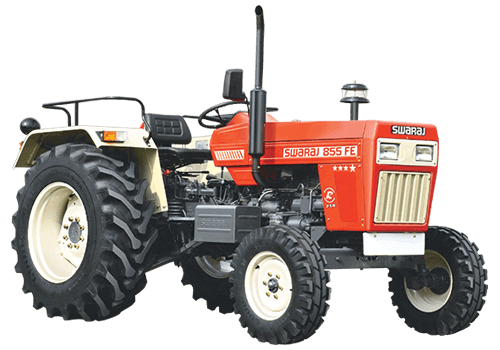A Detailed Comparison between Swaraj 744 XT and Tafe 30 DI Orchard Plus Tractors

In the realm of agriculture, selecting the right tractor can significantly impact farm productivity and efficiency. Two popular choices in the market are the Swaraj 744 XT and the Tafe 30 DI Orchard Plus. While both cater to the needs of farmers, they differ in various aspects, including engine performance, transmission, hydraulic capacity, and dimensions. Let's delve into a comprehensive comparison between these two tractors to help farmers make an informed decision.
1. Engine Performance:
The Swaraj 744 XT boasts a robust 50 HP engine with a displacement of 3478 CC, delivering power-packed performance for a wide range of agricultural tasks. In contrast, the Tafe 30 DI Orchard Plus features a slightly smaller 30 HP engine with a displacement of 1670 CC, suitable for orchard and vineyard applications where maneuverability is crucial. While the Swaraj offers higher horsepower, the Tafe excels in applications requiring agility and compact size.
2. Transmission and Gearbox:
Both tractors come with efficient transmission systems, albeit with differences in gear options and types. The Swaraj 744 XT features a combination of sliding mesh gears, offering eight forward and two reverse gears for seamless power transfer and precise control. On the other hand, the Tafe 30 DI Orchard Plus comes with a sliding mesh transmission with six forward and two reverse gears, providing adequate flexibility for orchard operations. While the Swaraj offers more gear options, the Tafe ensures smooth operation in confined spaces.
3. Brakes and Clutch:
In terms of braking systems, the Swaraj 744 XT is equipped with multi-disc oil-immersed brakes, ensuring reliable stopping power and enhanced safety during operation. Conversely, the Tafe 30 DI Orchard Plus features internally expandable mechanical type brakes, offering sufficient braking force for orchard and vineyard applications. Both tractors come with dual-clutch systems, facilitating smooth gear engagement and effortless operation in varying terrain conditions.
4. Power Take Off (PTO):
The Swaraj 744 XT offers a maximum PTO of 44 HP with multiple speed options, including 540 and 1000 RPM, catering to different implementation requirements for farming tasks. In comparison, the Tafe 30 DI Orchard Plus comes with a live, shiftable two-speed PTO, providing versatility for orchard operations at 540 and 1000 RPM. Both tractors ensure optimal power delivery to attached implements, enhancing overall productivity on the farm.
5. Hydraulic Capacity:
Hydraulics play a crucial role in tractor functionality, enabling farmers to lift and operate various implements with ease. The Swaraj 744 XT boasts a lifting capacity of 1700 kg, allowing for the attachment of heavy implements for plowing, tilling, and harvesting. In contrast, the Tafe 30 DI Orchard Plus offers a slightly lower lifting capacity of 1100 kg, suitable for lighter implements typically used in orchard and vineyard settings. Farmers can choose the tractor that best suits their specific implementation requirements and operational needs.
6. Dimensions and Weight:
The dimensions and weight of a tractor influence its maneuverability and stability during operation. The Swaraj 744 XT has an overall length of 3342 mm,a width of 1945 mm, and a wheelbase of 2096 mm, with a total weight of 2070 kg. In comparison, the Tafe 30 DI Orchard Plus features a more compact design, with an overall length of 2800 mm, width of 1420 mm, and a wheelbase of 1600 mm, weighing 1400 kg. The Tafe's smaller footprint makes it ideal for navigating narrow orchard rows with ease, while the Swaraj offers greater stability and traction for larger-scale farming operations.
Conclusion:
In conclusion, both the Swaraj 744 XT and the Tafe 30 DI Orchard Plus are commendable tractor models offering distinct advantages to farmers based on their specific requirements and applications. While the Swaraj excels in power, versatility, and all-around performance, the Tafe stands out for its agility, maneuverability, and suitability for orchard and vineyard operations. Ultimately, farmers should consider factors such as farm size, terrain, crop type, and individual preferences to choose the tractor that best aligns with their needs and maximizes their agricultural productivity.
- Art
- Causes
- Crafts
- Dance
- Drinks
- Film
- Fitness
- Food
- Games
- Gardening
- Health
- Home
- Literature
- Music
- Networking
- Other
- Party
- Religion
- Shopping
- Sports
- Theater
- Wellness




